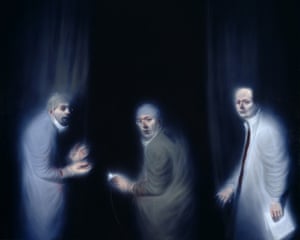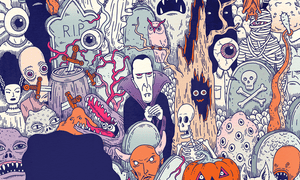Via Christine Steinon Oct 27, 2015

“It’s not your dog’s fault—you’re running after him. That’s why he’s not coming,” I shouted over to the dog training field.
The woman desperately tried to make her dog come to her.
I explained to her that when she is running after her dog, the dog thinks she is playing with him. If he’s not coming when she calls him she should run away—that would be the only way the dog would then come after her.
I worked in a dog training school some time ago, and I can tell you—it’s not really a dog training school, but more of a school to train humans how to communicate properly with their dogs.
The dogs never do anything wrong. It’s similar to children’s behavior—they just react to what we are doing, to whatever signals we give.
When I was a little girl, I grew up with two little dogs my grandmother owned, and a couple years ago, I managed to get my own two dogs—not so little, but with the same big hearts like the little dogs back then.
If we take a bit time to look into the behavior of our dogs, we will realize they have a very readable way of communication. That is one of the first lessons my dogs taught me…
Clear communication. My dogs always show me how they feel.
It’s their (whole) body language speaking. I know from their eyes, posture and activity—everything! How they feel and even what they are about to do. My dogs show very clearly if they hear me—a little twitch of the ear, short look or eye movement—and if they will come.
They express it clearly if they want to go out, are hungry or want to go to sleep—preferably in my bed. It is clear from their body language if one dog likes another (or not), if they are going to bite (or not). They don’t “play games,” so to speak, like we humans sometimes do.
I am always amazed with their direct form of communication. Dogs show each other when they are in the mood to play or sleep—and they would never play when they don’t want to. Moreover, they have a very good strategy to figure out things very quickly—first, sniff it. Then, if necessary, lick it. With this they have all the information they need to make a decision, easy and instantly.
I would compare this to our gut or heart feelings. The initial feeling we have in the first place—“it is what it is”—that gut feeling.
Patience and perseverance. I don’t know of any other beings that would wait as patiently as my dogs do.
No matter if they need to wait in the car, or for me to return home or for their food to be served—they just wait. No barking, no jumping around, no howling and no freaking out.
It seems that my dogs are able to deal with almost every circumstance, and they are fine with it. Of course, there is a thin line between patience and perseverance when it comes to food. They will wait patiently for their food, and they will have perseverance when it comes to the food I’m eating. They don’t beg in an annoying way, but they will wait there, until the end—making sure that I know they’re willing to sacrifice themselves and finish the rest of the food, in case I need any help.
Doggie eyes. Those “doggie eyes” never lie—they speak the truth! They frequently remind me that the eyes truly are the doors to the soul. The truth in the eyes of a dog hits you instantly. There’s no way around it, the eyes just tell you everything.
The love, the desire for a treat or a cuddle, the fear or the boredom—my dogs teach me every day, that we just need to read the eyes, and we will know everything. Through the eyes we can dive deep into the soul of a being. Looking at those dog eyes, I just know how they feel, what they want, what their intentions are and what they are up to.
Trust. A dog trusts us 200%—he trusts in us and the universe.
I have two little anecdotes for this—some time ago, I went to Switzerland with my dogs, and we went hiking in a beautiful wood with many waterfalls. Sometimes there were five to six meters of steep slopes. The ground was slippery all over, and we humans sometimes needed to hold on to something, as a grip, to make it.
My female dog was all over the place. She ran through the water back and forth, jumping over branches and simply slide when she didn’t find a foothold. She frolicked right next to the water slopes, and one time she slipped and slithered a few meters, before finally stopping one centimeter before the edge of the slope.
My friend’s heart stopped while watching—he couldn’t move. My dog took a sniff of the fresh slope-air, and then she jumped all the way back. She did this several times, without fear. I believe dogs are like little kids and they know they are protected.
What would we do if we could have the same trust all our life?
Another time, my dog, Mogli, had a big shaggy hairball behind his ear. At some point I decided do cut it off, and I accidentally cut a hole in his flesh behind the ear. I know it sounds horrible—and it was. Mogli was yowling loudly and pervasively—and then, he was just looking at me, without barking, biting or anything. He just trusted that what I was doing was the right thing, even though it wasn’t.
I mean really—who would still trust you, even when you are hurting them? This brings me directly to the next point…
Unconditional love. A dog loves us no matter what.
No matter how we look, how we feel or what we do—they are always happy when we come back to them. They follow us wherever we go, and they want to be with us—whatever we do.
I see the love in the way my dogs look at me—how they observe what I do, how they follow me or come to cuddle, how they try to take care of me. It is this invisible (and visible!) bond of love I have with my dogs, that I learn the most from.
The longer I am with my dogs, the more I learn and the more I am able to understand.
I am truly convinced dogs were created to help us learn and grow—to show us how to come back to unconditional love and trust. I really enjoy the days I am able just to hang out with them a full 24 hours.
They teach me that it doesn’t take much to have a beautiful, fulfilled life. The most important elements are: to love, to trust, to play and to just be in the moment. My dogs are masters in this, and they do it effortlessly.
I hope that I always will be able to love, trust and play like them—and if I can’t, that they remind me how to.
Thank you, masters! High-five (paw?) and how about some extra treats for all of us today?
http://www.elephantjournal.com/2015/10/5-life-lessons-from-dogs-our-greatest-teachers/
.

















